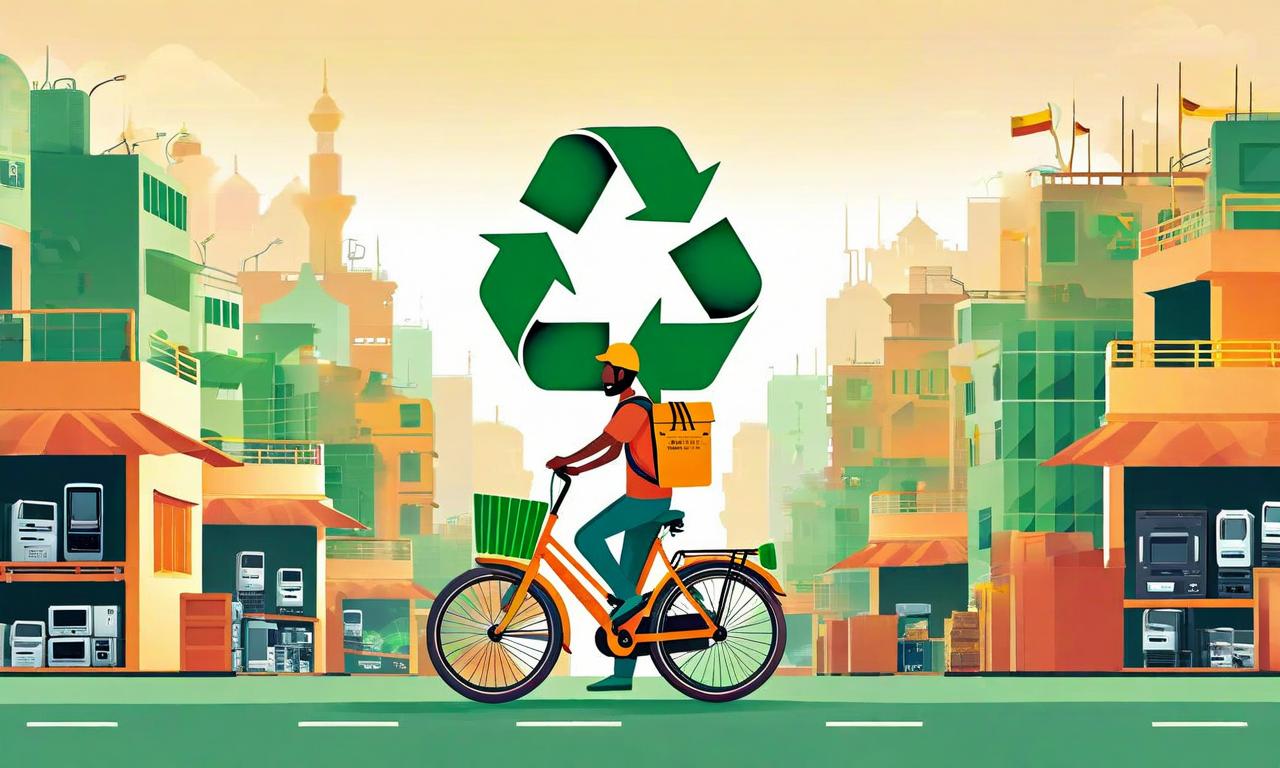GST Rate Cut to Slash Two-Wheeler and Small Car Prices by Over 10%
The GST rates on two-wheelers up to 350cc, small cars, and auto components have been reduced from 28% to 18%. This reduction is expected to lead to price cuts of over 10% for consumers. The automobile industry plans to pass these tax benefits directly to customers. The move is anticipated to make vehicles more affordable, particularly benefiting first-time buyers and middle-income families. The price reduction is expected to significantly impact the entry-level and commuter segments of the two-wheeler market, making them more accessible to youth, students, professionals, farmers, and daily-wage earners. The small car segment, dominant in tier-2 and tier-3 towns, is also expected to gain momentum. This GST rate cut could potentially stimulate demand, increase sales, boost manufacturing, create jobs, and contribute to overall economic growth.

*this image is generated using AI for illustrative purposes only.
In a significant move set to boost the Indian automobile industry, the Goods and Services Tax (GST) rates on two-wheelers up to 350cc and small cars have been reduced from 28% to 18%. This reduction extends to auto components as well, potentially leading to price cuts of more than 10% for consumers.
Industry Response and Consumer Benefits
Shailesh Chandra, President of the Society of Indian Automobile Manufacturers (SIAM), expressed optimism about the impact of this decision. "Making vehicles more affordable will benefit first-time buyers and middle-income families," Chandra stated, highlighting the potential for increased accessibility in the automotive market.
The automobile industry has announced plans to pass these tax benefits directly to customers, translating into substantial price reductions. This move is expected to have far-reaching effects across various segments of the market and consumer groups.
Impact on Two-Wheeler Segment
The price reduction is anticipated to have a particularly significant impact on the entry-level and commuter segments of the two-wheeler market. This change could make two-wheelers more accessible to a wide range of consumers, including:
- Youth
- Students
- Professionals
- Farmers
- Daily-wage earners
By improving affordability, the GST rate cut could potentially stimulate demand and increase sales in this crucial segment of the Indian automobile market.
Small Car Segment Poised for Growth
The small car segment, which dominates sales in tier-2 and tier-3 towns, is expected to gain considerable momentum from this tax reduction. The improved affordability is anticipated to stimulate sales across dealerships and service networks in these areas.
This segment's growth could have broader implications for the automobile industry, potentially leading to:
- Increased market penetration in smaller towns and rural areas
- Expansion of dealership networks
- Growth in the auto components and service industries
Broader Economic Implications
The GST rate cut on automobiles and components is likely to have ripple effects throughout the Indian economy:
- Increased Demand: Lower prices could stimulate consumer demand, potentially boosting sales volumes across the industry.
- Manufacturing Boost: Higher demand might lead to increased production, benefiting the manufacturing sector.
- Job Creation: Growth in the automobile and related industries could lead to new employment opportunities.
- Economic Stimulus: Increased spending in the automotive sector could contribute to overall economic growth.
Conclusion
The reduction in GST rates for two-wheelers up to 350cc, small cars, and auto components represents a significant shift in India's automotive landscape. As the industry prepares to pass on these benefits to consumers, the market is poised for potential growth and increased accessibility. The coming months will likely reveal the full impact of this decision on consumer behavior, industry dynamics, and the broader Indian economy.
























